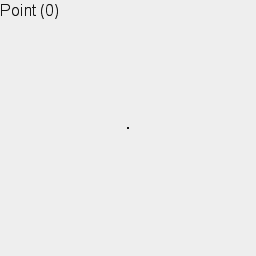Or, Information Architecture, Minimalist music, LEGO bricks, and a visit from the President of the People’s Republic of China
As I sat stuck on the bus yesterday for an hour and a half, crawling through traffic delayed and re-routed by an impending visit from President Xi Jinping of the People’s Republic of China, I listened for the first time to John Adams’ 1987 opera Nixon in China.
I grew up listening both to the masters of “traditional” classical music and to revolutionary 20th-century composers like Copeland and Stravinsky — the first CD I ever bought for myself, back in 1983 (the year CDs were released in Japan), was the Moscow Radio Symphony Orchestra’s recording of Stravinsky’s Rite of Spring. Later, I learned to love opera when I sang in the chorus for Carmen with the oldest active symphony west of the Mississippi (a fun fact about the Walla Walla Symphony). But despite passionate recommendations from Music Major friends in college, I’d never really dug particularly deeply into Philip Glass, Arvo Pärt, Terry Riley, or John Adams. Hearing The Chairman Dances on the radio over the weekend, I realized I’d been missing something.
Whether writing software documentation earlier in my career as a technical writer, specifications and user stories more recently as a product manager, or poetry and fiction whenever I can find the creative and emotional space to write it, music has always played a significant part in my writing process. From Bach and Beethoven to Johnny Cash and Sigur Rós, just about any music helps me focus and concentrate, while the right music can help me maintain the emotional state I want to explore when writing poetry in particular.
This is not to say that music is somehow subordinate or subservient to writing. Music is in all probability the first art form that we humans created. Paleoanthropologists have excavated Aurignacian flutes from numerous sites across Europe — swan and vulture rib bones, cave bear femurs, and mammoth ivory carefully drilled with finger holes.

With such incontrovertible evidence from 43,000 years ago, there is no doubt that music extends far back into the Paleolithic and may even precede the emergence of our species in Africa 200,000 years ago (I think it’s only a matter of time before the historically understudied African Middle or Later Stone Age reveals no less incontrovertible evidence of our African ancestors making music). Music was likely already a major component of the ritual activities that took place surrounded by the cave art of Chauvet and Lasceaux.
But the written word did not emerge until tens of thousands of years later in the Fertile Crescent and China, and did not evolve to include what we would consider “art” until even later, with poetry such as the “Epic of Gilgamesh” from around 2,100 BCE.

Thus, music serves to aid my thought processes as it has for my ancestors for the past tens of thousands of years, and writing is just one potential outcome of the thinking process.
At the same time, what I write myself and work with every day (I’m the director of the planning and design team for a software company that builds tools for writers) has always had a definable shape. I’m not talking about the butterflies and triangles that writers of concrete poetry use or even the hierarchies and so-called structures that luminaries in the content business talk about at conventions and write about in thick books about content strategy. No, visual poetic devices on a page and cascading sequences of technical content are at best two-dimensional (and more often than not merely linear).
For me, content has the kind of shape you can hold in your hands. When I’m writing a poem, the experience is much like drawing a lump of clay up from the potter’s wheel into a plate, a pot, a vase. Carrying the simile perhaps one step too far, the carving, burnishing, and glazing that follows a pot’s drying process are much like the editing process with words — trim here, add there, change this and that.
Things get a bit … weirder in my head with complex business content — websites, software help systems, multilingual hardware manuals, drug labels and other pharmaceutical content. Beyond the tangible three-dimensional shapes I perceive when writing poetry, modules of content and their variations, the relationships between pieces of content, the content’s metadata, and the intended uses for the content all combine to begin taking a shape beyond the confines of three-dimensional space. If a poem is a beautifully crafted but rather straightforward cube, a drug label — with its relationships to regional and local prescribing information, varying approval statuses by regulatory authority, and forthcoming indications in Phase III clinical trials — is nothing short of a tesseract (the four-dimensional cube animated here).
Most people talk about content in terms of the end products (novels, poems, or documents) and their storage media (books and files). Even when we talk about the rich landscapes of great works of fiction like The Grapes of Wrath or The Lord of the Rings, we fall back to tired, linear mental models like the “inverted check mark” that every English Major has seen scratched on a chalkboard — tension building in a long line to a climax, with a short downward dip for the denouement after resolution of the story’s central conflict.

Despite fancy words we use in business content like “metadata,” “reuse,” and “modularity,” the way we actually describe and work with content is no less flat than the boring ways we analyze fiction. If language reflects the way we think, we’re thinking about content all wrong. Content is about complex relationships, tangible structures, and the interplay of ideas and their expression. Every piece of content has a shape.
One way I break out of linear and two-dimensional ways of thinking about content is by approaching it in a literally physical form. Thanks to my lifelong LEGO hobby, both my home and office are strewn with boxes of little plastic bricks from Denmark. When talking about content with colleagues, I often build what I’m describing, with specific colors representing certain content types and different bricks above, below, and behind to represent the relationships between the core content we’re discussing and other, related content. Not surprisingly, this mental model has worked much better with colleagues and customers than lengthy enumerations of content types and metadata in a spreadsheet or a linear hierarchy of elements and attributes.
Interestingly, the language and processes of the Minimal music aesthetic also focuses on repetition, modularity, and complex structure. What I discovered this week is that the music itself creates a shape in my mind in the same way that both literature and complex business content do. For example, in Adams’ “The Chairman Dances,” repeated phrases from the piccolos and a pulsing bass rhythm anchor the two ends of the score’s range and build on each other over the course of the piece, with transitions to variations on more traditional musical genres such as Big Band music from the 1930’s. The similarity to the Information Architecture concepts of modularity, reuse, and variation is even more evident in “Short Ride in a Fast Machine,” with its persistent wood block percussion and varyingly repetitive trumpet notes. (I’m listening to Philip Glass’s Einstein on the Beach as I write this post, but my brain hurts a bit processing its shape.)
So, if music influences thinking, and thinking yields writing, perhaps we should be listening to more Philip Glass and John Adams while playing with LEGO bricks, and reading fewer big books about Information Architecture and Content Strategy…

